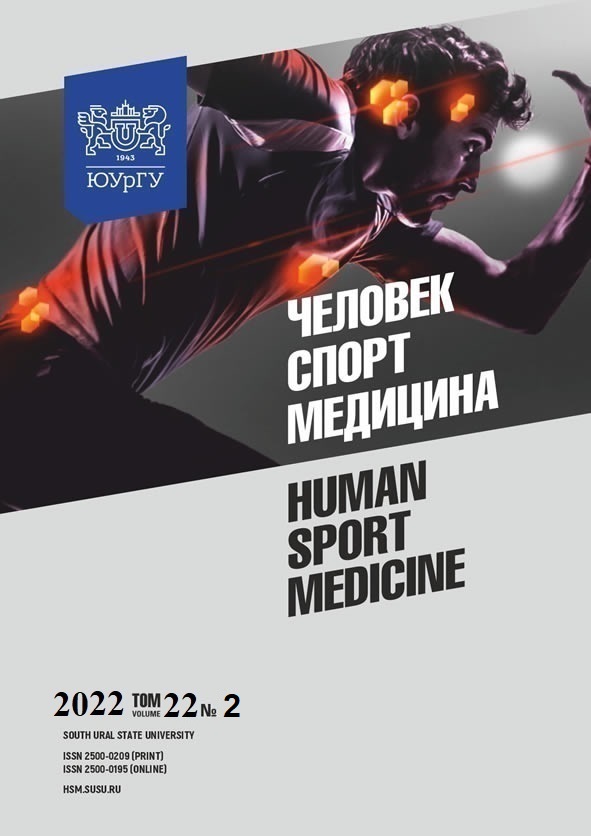SERUM UREA AND ABSOLUTE COUNT OF CIRCULATING CD4+ CELLS AS BIOMARKERS OF SPORTS PERFORMANCE IN INTERNATIONAL LEVEL COMBAT ATHLETES
Abstract
Aim: this paper presents a comparative analysis of biochemical and immunological blood parameters in high skilled combat athletes with different athletic achievements. Materials and methods. The study involved male combat athletes (n = 78) of the Russian national team; mean age – 25.2 (21.5–28.9) years, mean body weight – 76.9 (68.4–83.4) kg. The following biochemical and immunological laboratory tests were performed: urea content, transaminase activity – ALT, AST, creatine kinase – CK, testosterone, cortisol levels and their ratio, absolute and relative CD3+, CD4+, CD8+, CD16+, CD19+ lymphocytes, immunoregulatory index – CD4+/CD8+, phagocytosis, IgA, IgM, IgG, IgE. The subjects were divided into two groups with respect to athletic performance: the UHA group (ultra-high achievements) included Olympic, World and European champions and medal winners (n = 19), the MNT group involved national team members (n = 59). Results. A multifactorial assessment of the relationship between athletic performance and biochemical/immunological blood parameters showed two biomarkers of predictive importance: urea up to 5.75 mM/l (sensitivity – 73.3%, specificity – 68.7%) and absolute CD4+ count – 0.865·109/l (sensitivity – 81.3%, specificity – 59%); decreased serum urea and increased circulating CD4+ cells were associated with outstanding athletic performance typical of the UHA group. The simultaneous use of both markers and their reference values improves the predictive accuracy for the UHA group by 3 times compared to a single use of absolute CD4+ count. The odds ratios were 24 (95% CI 6.23– 2.5, p < 0.001) and 8.147 (95% CI 2.121–31.3,
p = 0.001), respectively. Conclusion. Serum urea up to 5.75 mmol/l as the most important indicator of protein metabolism and circulating CD4+ count of > 0.865·109/l as a factor of immune performance demonstrate the ability to better tolerate training and competitive loads and resist infections.
References
References on translit
Copyright (c) 2022 Human. Sport. Medicine

This work is licensed under a Creative Commons Attribution-NonCommercial-NoDerivatives 4.0 International License.















